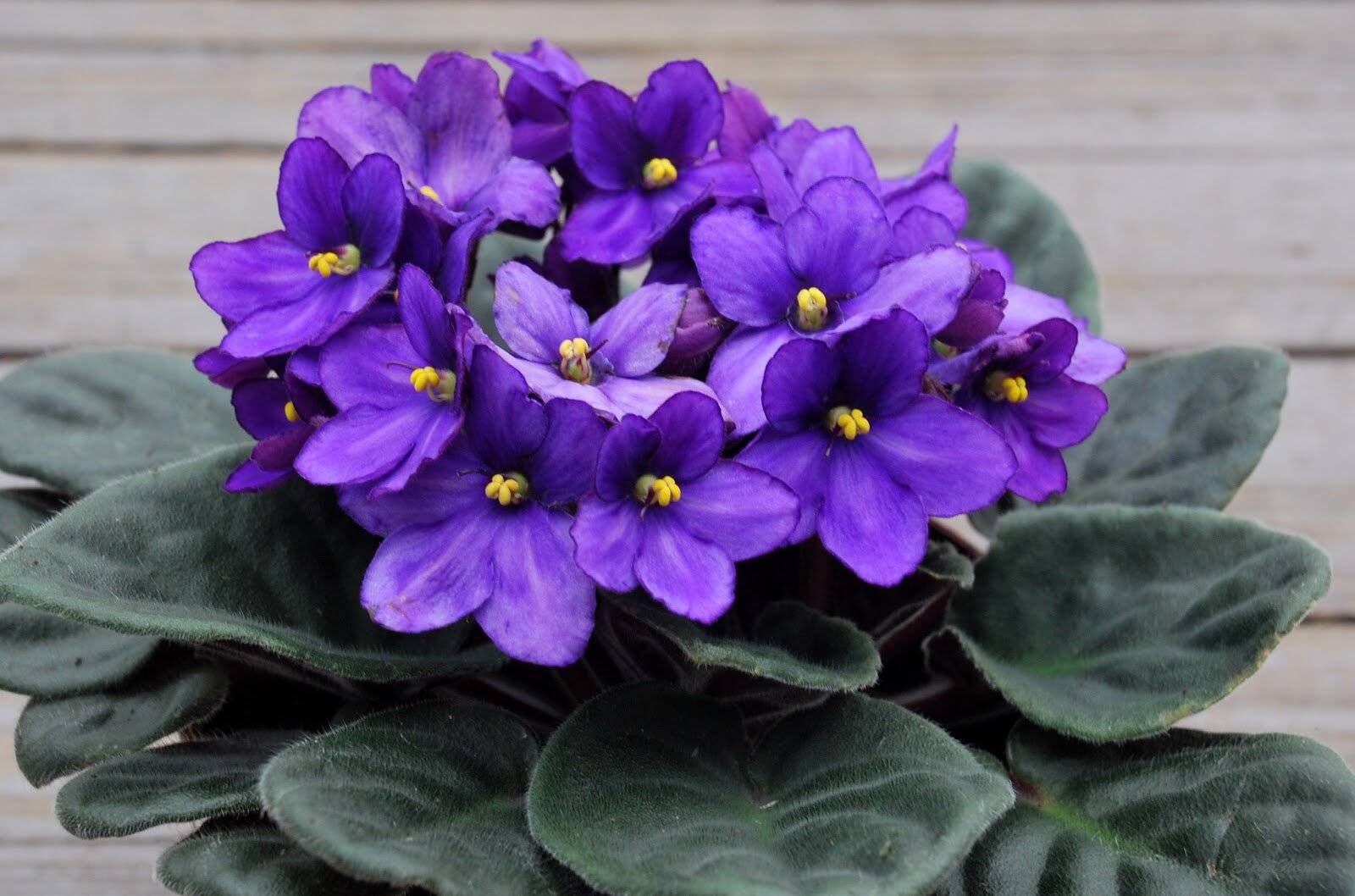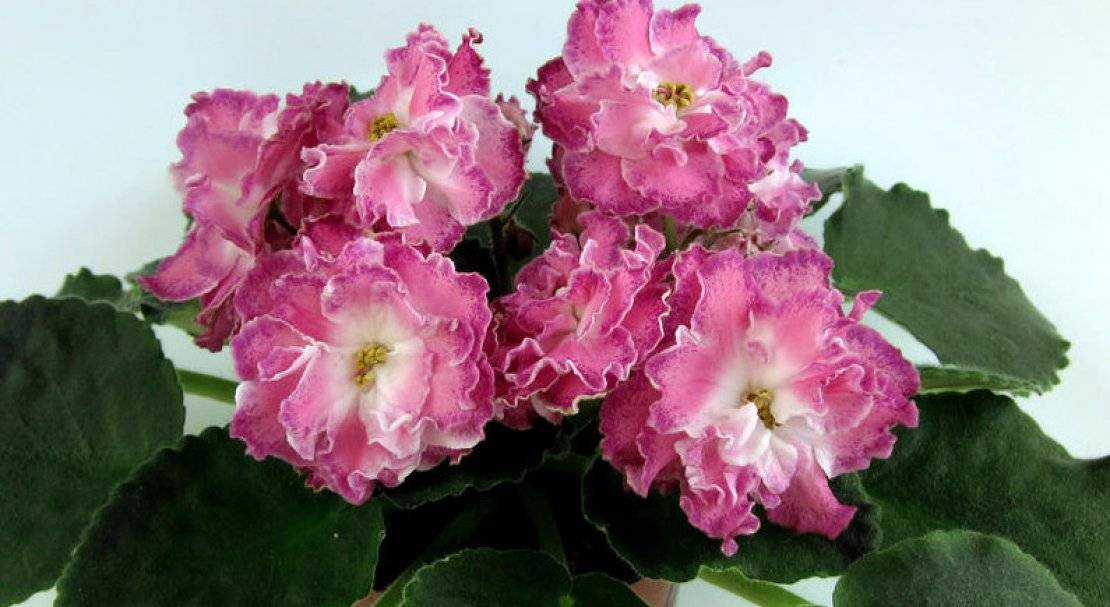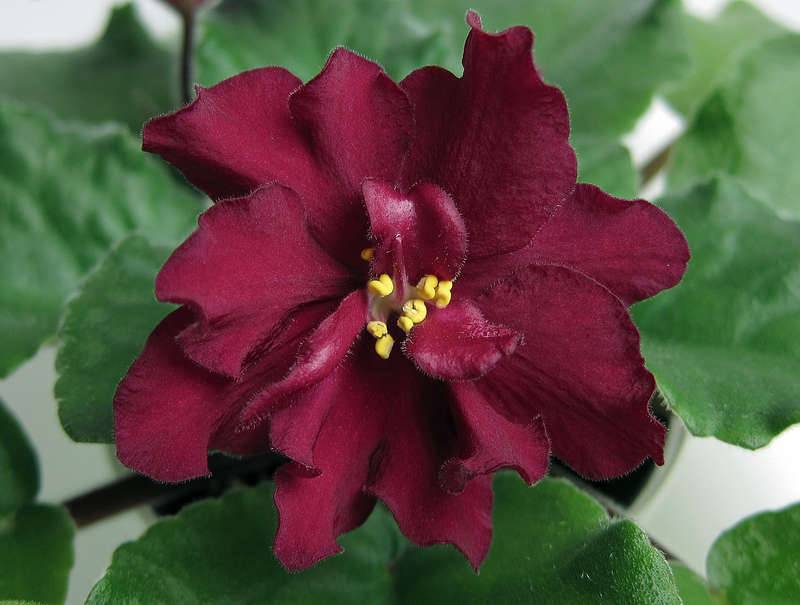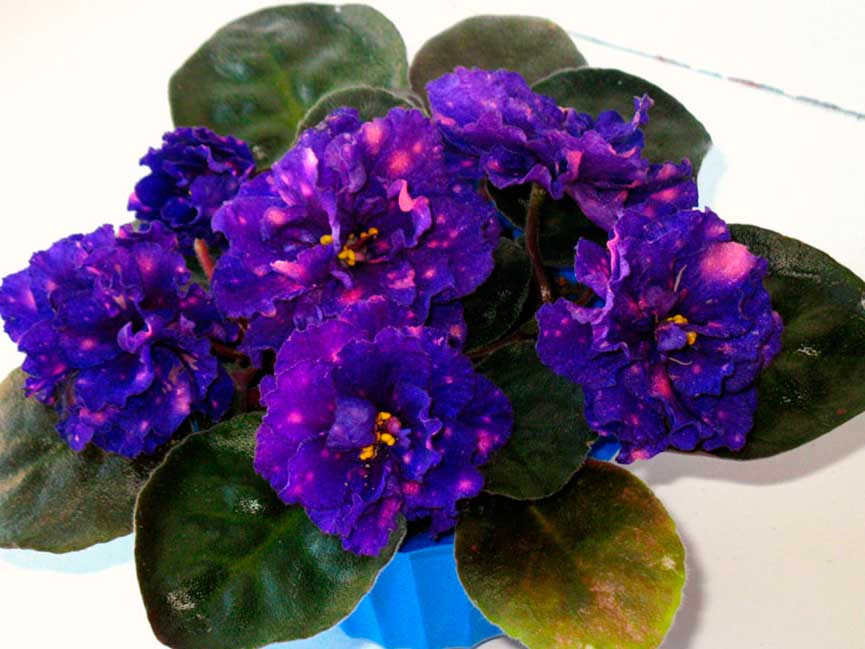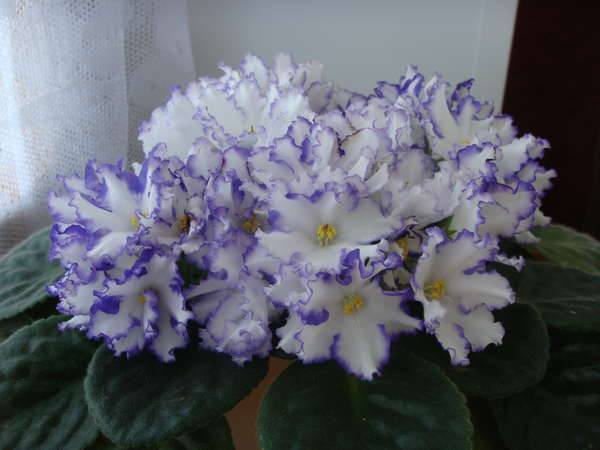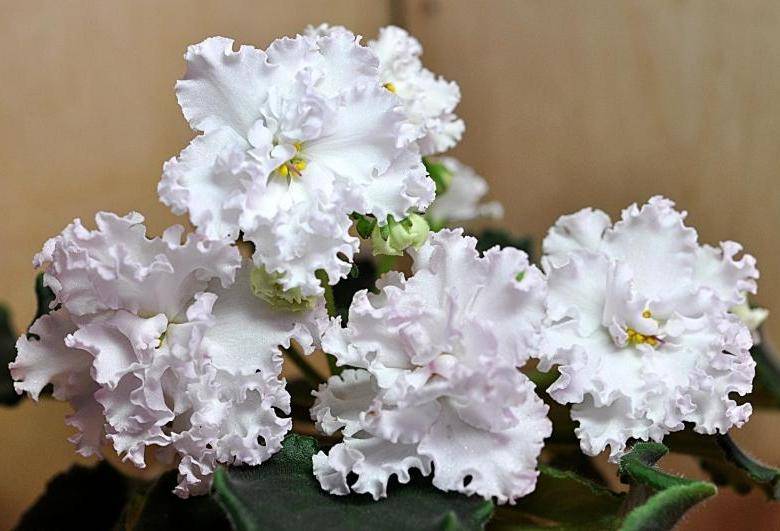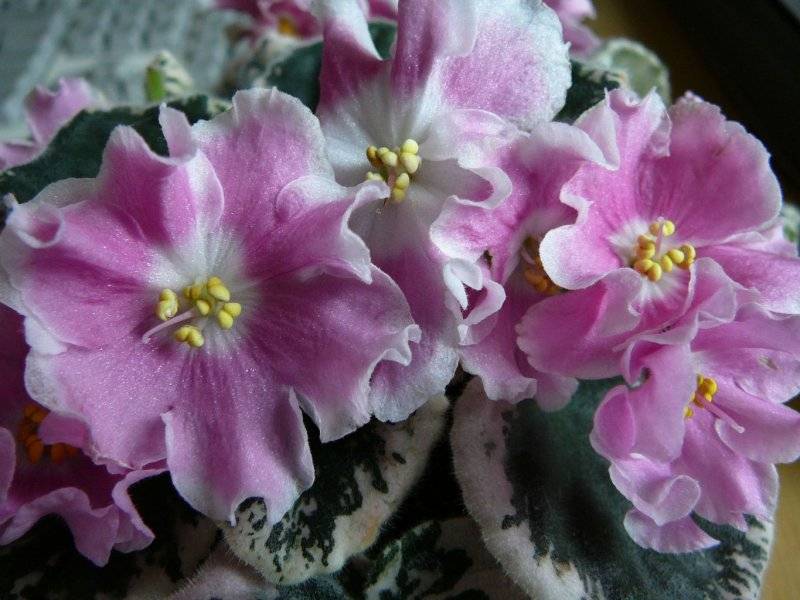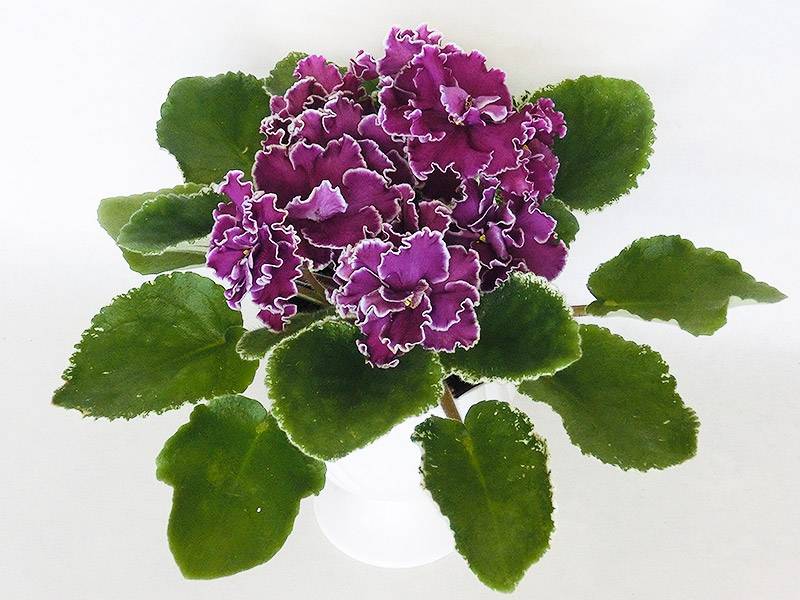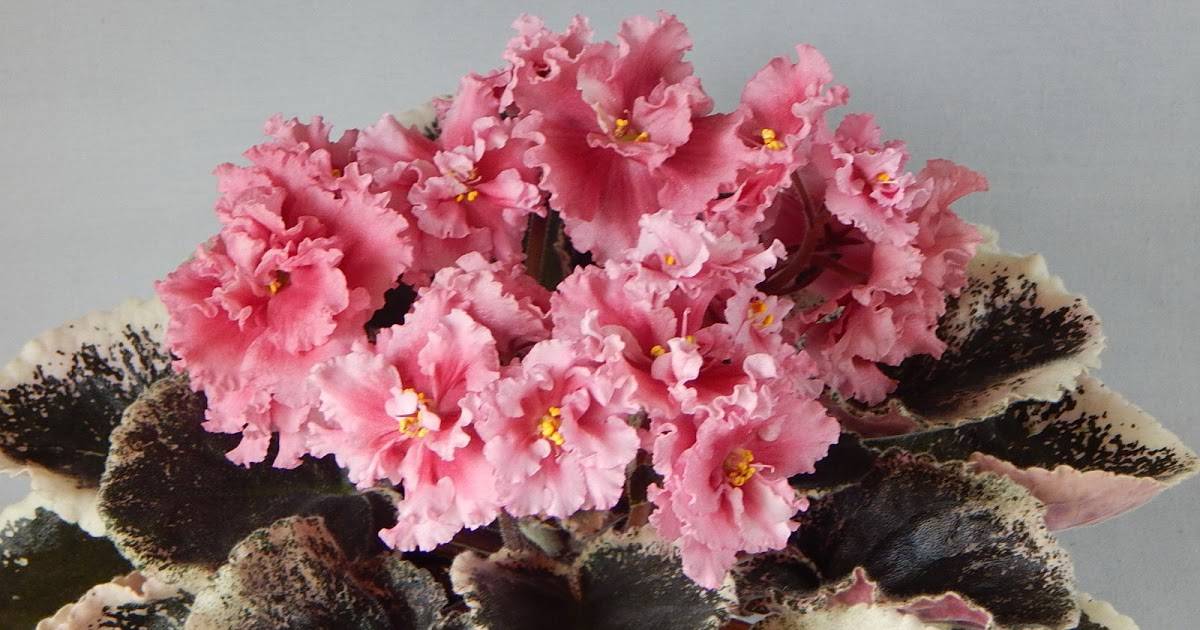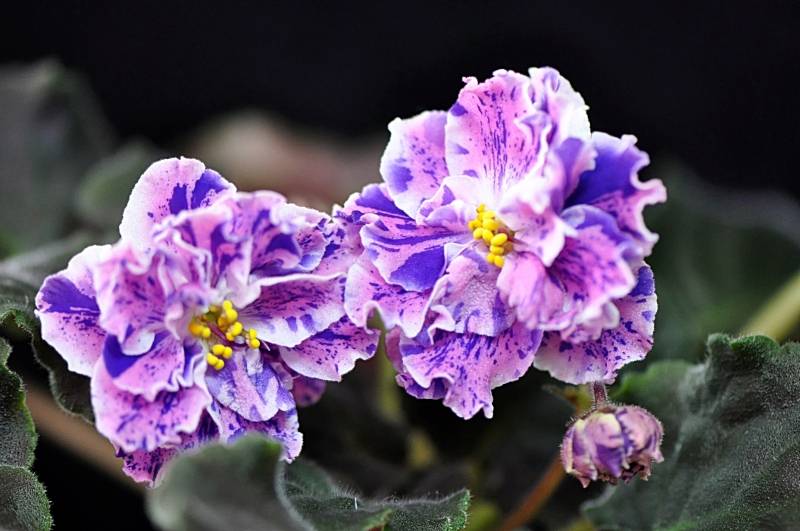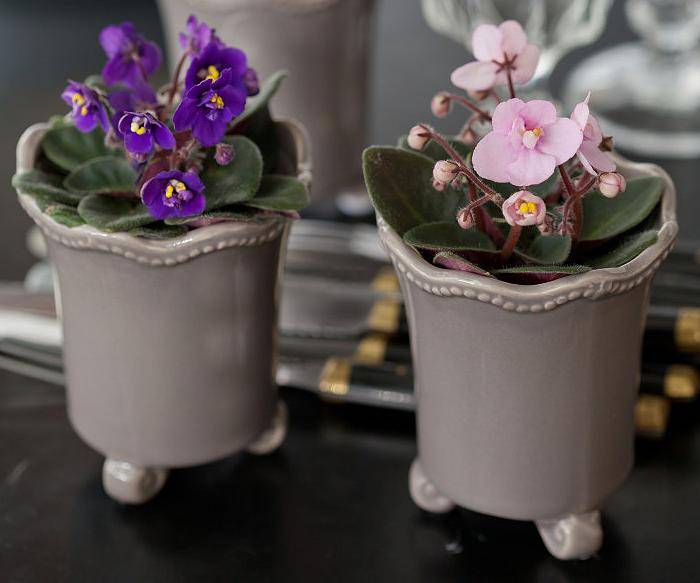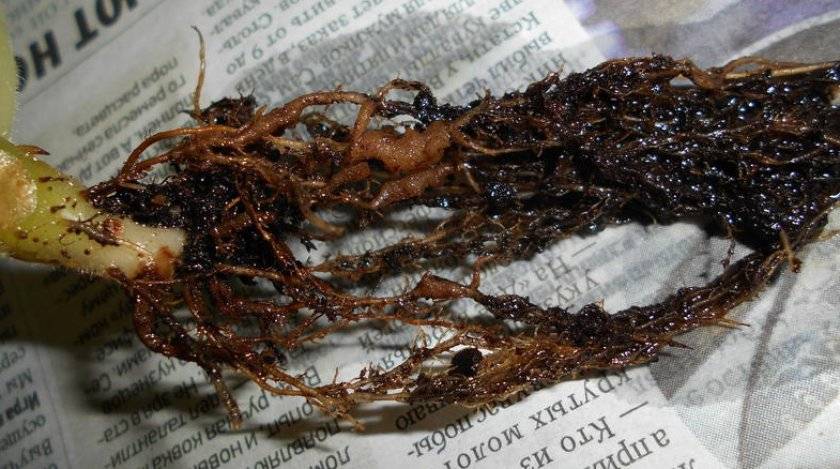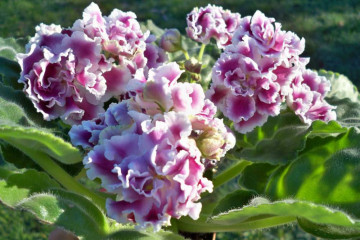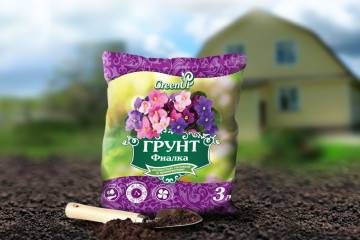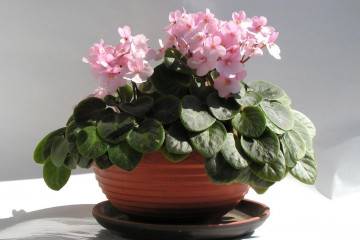Violet varieties - complete classification
Content:
- A brief history of the emergence of varieties of violets
- Classification of species and names
- Unusual varieties
- Most Valuable Varieties Among Violet Collectors
- Planting and grooming recommendations
- Features of reproduction at home
- Possible problems in growing uzambar violets
Love for Saintpaulias is all-encompassing. A lot of flower growers are delighted to learn about the countless varieties and species. Violet is a rather unpretentious plant, although in some cases you will have to tinker with it.
A brief history of the emergence of varieties of violets
Violet is a perennial or annual plant. Most often it has a short stem, on which leaves are collected in a rosette, having an oval or round shape. Africa is considered the birthplace of the flower. The plant grows in temperate climates and can be seen in the wild in North America, the Andes and Japan. Some subtropical species are native to South Africa.
At the moment, breeders have bred a large number of violet varieties with names that are sometimes difficult to understand, but this does not prevent them from conquering the world.
Classification of species and names
It is rather difficult to list all the varieties of Saintpaulia, since their variety is very large. At the same time, the same variety can belong to several groups at once, which one to choose for growing at home is a private matter for everyone.
By flower size
The sizes of flowers are divided into certain groups:
- up to 2 cm;
- 2-4 cm;
- 4-6 cm;
- more than 6 cm.
Despite the size, the flowers themselves can win the love of gardeners and hobbyists.
Olesya
A neat, compact, standard-sized rosette with long stems. The flowers are medium in size (about 5 cm in diameter), semi-double or double.
Black Prince
For those who do not know what the Black Prince violet looks like, it may seem strange that it actually appears bright scarlet in many photographs. However, depending on the lighting, its color may be black and red. Large double flowers reach 7 cm in diameter.
Black Pearl
Densely double purple-violet flowers can reach 7 cm, although initially they bloom small and neat. The rosette is straight, round, standard size. Differs in abundant flowering, does not fade for a long time.
By flower shape
Violets are divided into different groups depending on the shape of the flower. They are distinguished by 6 varieties:
- the classic violet flower has 5 petals of different sizes in one row;
- pansies have 5 petals arranged in two rows, with smaller ones in the upper one. Often they have a wavy border;
- the classic star is distinguished by the presence of 5 petals, pointed at the edges, located in 1 row. The middle is pronounced;
- the wasp has 3 large petals, completely separated from each other, as well as 2 small ones, which roll up into a tube and rise above the rest;
- at the bell, petals fused at the base are noticeable, which is why the flowers do not fully open;
- the bowl differs in that the flower also does not open completely, despite the fact that the petals are not connected at the base.
Bullfight
Violet blooms with large, double or semi-double flowers in the shape of a star. Depending on the lighting, their color can vary from bright scarlet to maroon. A distinctive feature of this variety is flowering throughout the year. The buds can be up to 8 cm in diameter, making the rosette look like a bouquet.
By the length of the outlet
The size of the rosette can vary significantly depending on the type of flower. Many collections have micromini violets, since they reach 8 cm in diameter, and therefore it is convenient to collect unusual plant species. It is recommended to grow them in pots with wick irrigation, as otherwise they dry out quickly.
Mini versions of the flower do not exceed 15 cm. They are also grown on wick irrigation. Semi-minis have rosettes from 15 to 20 cm. For these varieties, a large amount of light is harmful, as the leaves begin to turn yellow. The standard rosette is 20-40 cm in diameter.
Kira
Violet terry white with bright pink edges. Has the shape of a star. Green leaves with wavy edges. Standard size rosette with large leaves.
By the color of the petals
Petals can be monochromatic, bicolor, or multi-colored. Some cultivars imply spots or borders of a different color.
Milky Way
The Milky Way is a fairly popular and unusual type of violet. Depending on the species, the color can vary from lilac to deep purple. But regardless of this, there are always contrasting spots of various sizes and shades on the petals. The buds can reach 7 cm in diameter, but it all depends on the number of peduncles.
Chanson
The description cannot convey all the beauty of this saintpaulia variety. A violet violet with lilac small spots on the petals vaguely resembles the Milky Way. Chanson has large dark green leaves, double flowers are collected in rosettes of 5-6 pcs. The edges of the petals are wavy.
Jan Minuet
Violet pink has a bright purple border. Jan Minuet belongs to terry varieties, deciduous rosettes of bright green color emphasize the shade of the inflorescences.
By the degree of terry
The most beautiful violets are considered to be terry. However, according to the degree of terry, they are also divided into several groups. They differ among themselves and in the number of petals. Simple ones most often have 5 petals. Scallop Saintpaulias are considered semi-double, have from 5 to 8 petals, some of which are underdeveloped.
Terry violets can contain up to 10 petals, which cover the core with stamens. Carnations are terry Saintpaulias with larger buds and more petals.
Mother's heart
The violet with the name Mother's Heart has a deep burgundy color and large flowers in the shape of a star. The bright white border contrasts nicely with the base color. The socket can be simple or semi-double. Flowers reach 8 cm in diameter.
Arctic Frost
The blue and white violet has a star-shaped and semi-double appearance. The standard size rosette has large foliage and large flowers. They are two-colored - white with a bluish border.
Maria
A pink terry violet has a structure similar to a rose; rarely, its shape can resemble a star.Inflorescences reach 4-6 cm, light petals along the edges are bright crimson, sometimes a wavy border can have a rich light green hue. The rosette itself is quite loose, the buds are located on long petioles.
Angelica
Double or semi-double large flowers of pink color with a fantasy spotted color and a lilac border. Angelica blooms for a long time and abundantly, but not often. The plant is unpretentious, the variety is popular due to its beautiful color and easy care.
Along the edge of the petal
Violet can be straight or wavy. Also, terry options have notched and fringed edges of the petals.
Chateau Brion
Bred in 2010, the variety has wavy edges. The flower is painted in dark ruby color with white or greenish edges. The inflorescences reach 6 cm in diameter. The leaves are no different from other species, they are saturated green with wavy edges and elongated in length.
Whipped cream
Large white double flowers with a pink champlevé border. The rosette of a light green shade with slightly wavy leaves can reach 17 cm. The leaves themselves have a red seamy side, which looks spectacular on a relatively small rosette.
Wild varieties
Wild violet has many varieties, which differ in the shape, size and color of the buds.
Doggy
A perennial herb has flowers of white, blue and purple shades, blooms in May or June. The buds do not have a pronounced odor, they reach 2.5 cm in diameter. The leaves reach 7 cm in length, are on long petioles.
Fragrant
Fragrant Saintpaulia is also a perennial plant, reaching a height of 15 cm. Violet violet prefers forest edges and glades, mountain slopes. It can be grown in garden conditions, while it requires special care, without it it can run wild.
Pink sensation
Pink Sensation is a semi-double violet with star-shaped inflorescences. White flowers with pink spots of large sizes can have a border of various shades.
Ampel varieties
Ampel violets are used for growing in hanging pots. Long stems hang down and release a large number of side shoots. They have several points of growth. The most popular types of ampel violets:
- Trinket Summer Skies has beautiful blue flowers and rounded green leaves;
- Robz Humpty Doo is notable for flowers with snow-white petals and light green leaves.
Variegated varieties
Variegated violets are popular with collectors as they delight with their beauty all year round. The appearance of their leaves is striking in the variety of colors. In addition to green, they can contain pink, yellow and light orange shades. Rare specimens have white leaves.
Oksana
A burgundy or dark red violet has the shape of a star, it is distinguished by the presence of a white wavy border. Variegated white-yellow leaves beautifully set off the buds. A plant with a standard rosette size, buds reach 5 cm in diameter, a violet brings 1-2 flowers on one peduncle.
Isolde
White terry with pink shadows and pink ruffled border of violets Isolde are in the shape of a star. The rosette is a standard size, round, evenly formed, with a small number of curled wavy leaves.The size of the flowers is 4-5 cm.
Pauline Viardot
A distinctive feature of this Saintpaulia is not variegated leaves with a bright, pronounced border on the edges, but large wine-colored flowers that can reach 8 cm.They are star-shaped with a wavy light edge.
Tommy Lowe
The violet was named after the breeder who bred it. The edging of the leaves is pronounced - yellowish or pink in color. In the middle, the leaf has a traditional green color.
Chimeras
Variegated violets usually have a different pattern on their leaves, but there are chimeras that have a pattern with clear boundaries. Such Saintpaulias have a different structure: if you cut a two-color leaf plate, you will notice that it consists of two layers - dark and light.
Unusual varieties
Among the violets, there are unusual representatives. For example, the Odalisque variety, which vaguely resembles Saintpaulia, although it belongs to this genus. He receives a large number of awards at exhibitions, is popular far beyond the CIS, although it was bred in Ukraine.
The blossoming pink flowers are large, not less than 6 cm. The petals are neat of the same size, wavy shape with openwork edges. The flower shape is a star.
Buckeye Seductress is also unusual. Semi-double lilac-blue flowers have a wide light green border. A large rosette (about 45 cm in diameter) can take up a third of the windowsill. The foliage is green with creamy splashes.
There is also Reigning Beauty - purple stars with a dark ruffled edge. Outwardly reminiscent of the Buckeye Seductress.
Most Valuable Varieties Among Violet Collectors
Favorite varieties of collectors are most often found at various exhibitions and fairs. They differ in a certain structure or color.
Isadora
This variety of violets is the most surprising in its color. Lush pink buds with a lot of small lilac dots. Semi-velvet flowers have a wavy rim at the edges, which cannot but attract the attention of flower growers.
Rosemary
Rosemary varietal violets are exquisite representatives of the genus. The brightly colored buds are quite lush, the wavy edges resemble corals. The pink petals are decorated with purple spots. During flowering, Rosemary can please with 6 flowers if it receives enough light.
Winter rose
The Violet of the Winter Rose variety has a remarkable structure of the inflorescence, which looks like a rose, hence the name. The blue-violet petals have white edging, and the small, dark green leaves beautifully set off the color of the buds.
Sea wolf
Often this variety of violets receives awards at many exhibitions. Flowers resemble a sea wave, have a light blue or light lilac hue, large castings resemble burdock leaves. The rosette can be up to 40 cm.
Planting and grooming recommendations
Violet is not a very whimsical plant, however, it is recommended to follow certain rules for growing. In the garden, some types of wild Saintpaulias can survive on their own, but in most cases, do not forget about proper care.
Soil, illumination, degree of moisture, planting capacity
The violet loves light, but the sun is harmful to her, as brown spots may appear on the leaves, the plant will begin to fade. You will have to learn how to disperse the sun's rays or not put the flower on the windowsill on the south side of the house.
At home, Saintpaulia should grow at a temperature of 18-26 ° C. Sudden changes in temperature and drafts are harmful to her. Watering is recommended to be carried out with water settled for 1-2 days in the plant tray. Watering is required 2-3 times a week.Air humidity should not fall below 50%.
Features of reproduction at home
Florists who love violets easily breed them in large numbers using one of the propagation methods. The simplest is by cuttings.
It is recommended to take not old leaves for breeding at home, since they will not be able to give many children. But it is also not recommended to take a leaf from the top, since it is harmful to the plant itself.
The cut leaf needs to be rinsed with warm water. You can root in water and substrate. In the second case, it is required to prepare the soil from peat, sphagnum moss and perlite. The container with the handle must be transferred to a bright, warm place.
Possible problems in growing uzambar violets
Usambara violets require some personal care, so you should not neglect them, as there is a risk of diseases and pests. Also, from improper conditions, leaves can wilt and stains appear on them.
Diseases
Powdery mildew is a common disease in violets. It is caused by harmful fungi. Outwardly, it looks like flour scattered over leaves and corollas. Infection occurs from the soil. You can overcome the ailment with soapy water.
Fusarium is considered an equally dangerous disease for Saintpaulias. The disease first affects the roots and then spreads to the stem and lower leaves. The roots and foliage wither, the stems become watery, then die off.
Late blight may appear - brown spots on the leaves. With the development of the disease, the spots spread to other leaves, which die off, because of which the rosette begins to wither. If the tip is not infected, it can be cut off and rooted.
Pests
The most common pest that infects violets is the cyclamen tick. It is small in size, and therefore almost invisible. Due to parasites, the plant becomes covered with a large number of hairs that resemble dust. If you have any suspicions, it is worth looking at the back of the leaves, the mites live on it.
Nematoda is also an insidious enemy of Saintpaulia. These are worms that penetrate the root system and feed on the outlet. They suck out juices and contaminate with toxins, which disrupts the supply of nutrients to tissues.
You can exterminate pests with insecticides.
Other problems
Improper care is bad for Saintpaulias. All problems are visible on the leaves: they become dull, spotty, small, curled. This is due to improper watering, insufficient amount of fertilizers in the soil or an excess of them, as well as from sudden changes in temperature. You should familiarize yourself with the rules of care so that such problems do not arise.
Regardless of whether you like an orange violet or a panther, it is quite easy to start growing flowers. The main thing is to learn the rules of care so that the plant is healthy. The names of varieties of violets can be determined directly in botanical stores or on specialized sites, since the same species can be called differently.
